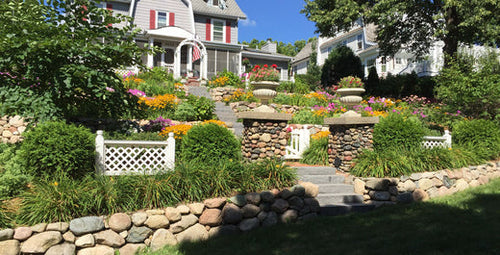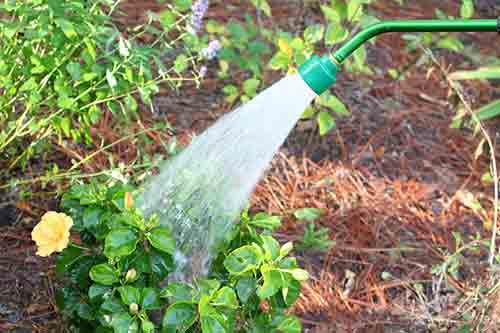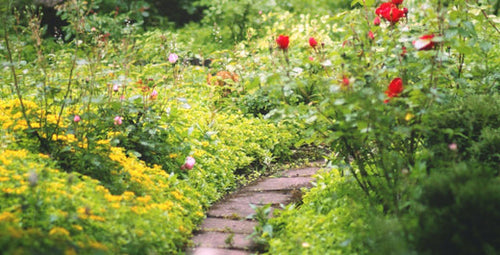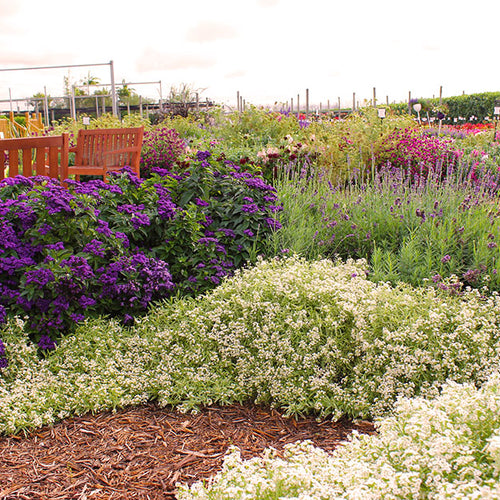What Is Impatiens Downy Mildew?
Impatiens downy mildew is a fungal disease. It’s not new, but it’s only been a big problem in North America for a couple of years. Like many other fungal diseases, it thrives in cool, moist conditions. In areas with hot, dry summers, you may see less impatiens downy mildew (or see it later in the season). The disease can be fatal to impatiens once they’re planted in the garden.
What Does Impatiens Downy Mildew Look Like?
One of the first symptoms of impatiens downy mildew is pale, light green leaves. As the disease progresses, the leaves may look wilted and you may see a cotton-like white film on the underside of the leaf. These early symptoms can be a bit subtle, but once impatiens downy mildew kicks in, it becomes more obvious: All the flowers drop off, followed by the leaves—so you’re left with bare sticks. Eventually, the stems give in, too, and collapse on the ground.
Does Impatiens Downy Mildew Come Back?
Unfortunately, impatiens downy mildew produces seed-like spores that drop onto the soil. These spores can survive over winter and are believed to remain viable for several years. If you’ve seen the disease in your landscape and want to avoid it, it’s best to avoid planting impatiens again for a few years.
Which Plants Does It Affect?
Old-fashioned impatiens (also called busy Lizzies or Impatiens walleriana) are the most susceptible to impatiens downy mildew. A couple of other species are affected, including balsam (Impatiens balsamina) and the North American native wildflower touch-me-not (Impatiens capensis).
The good news is that impatiens downy mildew does not affect New Guinea impatiens or SunPatiens. You can continue to grow these varieties without worry.
What Can You Grow Instead?
While few plants provide the rich color range of old-fashioned impatiens in the shade, New Guinea impatiens come close. Varieties such as the Celebration series, Infinity series, Painted Paradise series, Sonic series, etc. are excellent alternatives.
Begonias are some of the easiest flowers you can grow in shade. Most of the flowering types offer blooms in shades of red, pink, and white. But there’s a wealth of varieties grown for their attractive variegated foliage, and these bring in purple, silver, copper, orange, and even black tones to their leaves.
Caladiums also offer bold appeal from their leaves instead of flowers. The heart-shaped leaves, reminiscent of elephant’s ears, are decorated with stripes and splashes of red, pink, and white. Most caladiums prefer shade, but there are some that will also tolerate sunny conditions.
You can never go wrong with coleus. Big, beautiful, and wonderfully easy to grow, coleus packs in more color than impatiens because their brightly colored leaves. Coleus foliage offers brilliant shades of red, orange, copper, gold, chartreuse, purple, and even hot pink.
Sweet potato vine, another dramatic plant grown for its foliage rather than its flowers, offers bold chartreuse, purple, copper, or bronze leaves. In most areas, you can grow sweet potato vine in sun or shade; in hot-summer areas, it does best with a little afternoon shade.
Like caladium, coleus, and sweet potato vine, alternanthera is grown for a bright display of foliage color. This under-utilized annual shows off leaves boldly variegated with chartreuse, purple, pink, bronze, or copper. Most varieties of alternanthera grow in sun or shade.
Impatiens Questions?
We love to talk to other gardeners. Email us your questions and we'll have one of our experts get back to you!
When you have your list of growing conditions and desired attributes, it’s fairly easy to go through the list of perennials and match up the ones that will work for you. If you’d like inspiration, start by paying attention to what’s growing in your neighborhood. Chances are if your neighbors have success with certain plants, you will, too. Also visit any local public gardens, including parks and botanical gardens. Again, the plants you see thriving there should also be good bets for you. The staff at these gardens, as well as the staff at your local garden center, can be excellent resources. You can also find a wealth of information online, such as our own Plant Finder, as well as books and magazines.
Written by Justin Hancock

















